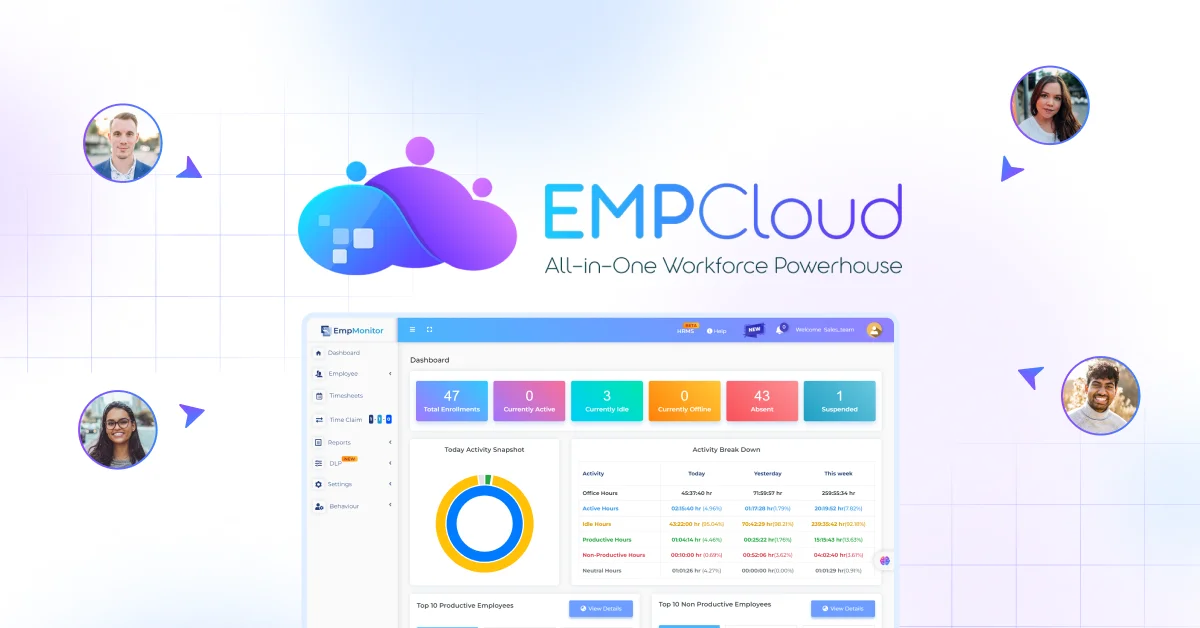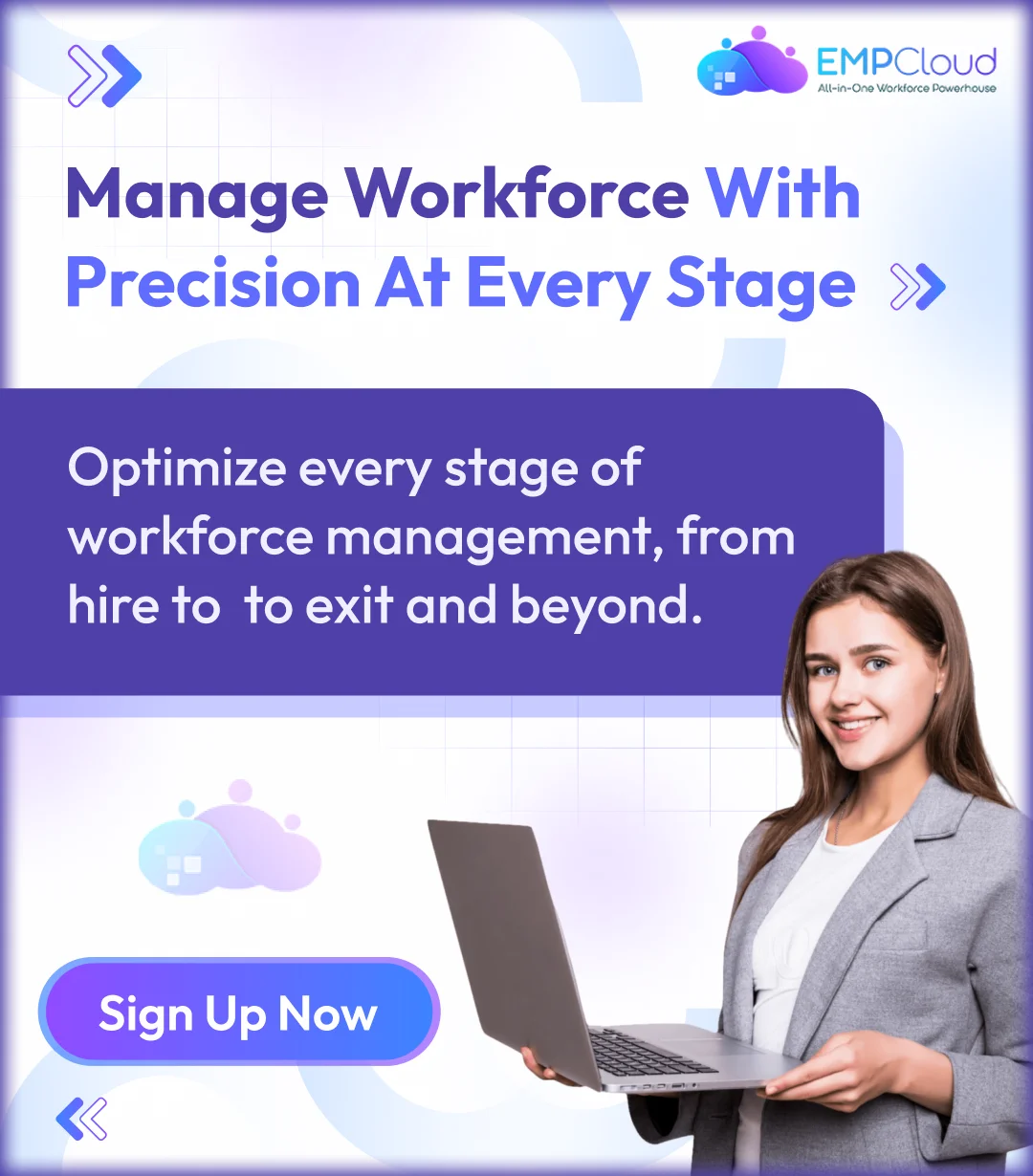
Recruiting the right people is one of the most important tasks for any organization. Without skilled and motivated employees, even the best strategies can fail. That’s why recruitment and selection play a crucial role in building a strong workforce and ensuring business growth.
In this comprehensive guide, we’ll explore what recruitment & selection mean, how the process works, the tools that can make it more effective, and the strategies companies can use to attract top talent.
In a hurry? Listen to the blog instead!
What Is Recruitment & Selection, And Why Does It Matter?
At its core, recruitment and selection is the process of attracting, identifying, and hiring individuals who fit both the job requirements and the company culture. Recruitment focuses on attracting a pool of potential candidates, while selection involves evaluating and choosing the most suitable person from that pool.
For example, when a company posts a job advertisement, conducts interviews, and then decides which applicant to hire, it’s following the recruitment & selection process from start to finish.
A well-structured recruitment & selection strategy not only ensures you hire qualified professionals but also reduces turnover, improves team performance, and strengthens your employer brand. By using clear job descriptions, effective sourcing channels, and fair evaluation methods, organizations can build a strong workforce that drives long-term success.
The Importance Of Recruitment And Selection
Businesses operate in competitive environments where talent is one of the biggest differentiators. A strong recruitment & selection strategy helps:
- Ensure that new hires have the skills needed for success.
- Reduce turnover by finding employees who align with company values.
- Save time and costs through streamlined hiring practices.
- Improve overall productivity and morale in the workplace.
When done well, recruitment & selection can transform a business’s growth trajectory.
What Are The Key Steps In The Recruitment And Selection Process?
While every organization may customize the approach based on its size, industry, and goals, the recruitment & selection process generally follows a structured framework to ensure the right person is hired for the right role. A clear, methodical process not only improves hiring quality but also saves time and resources.
Identifying the Hiring Need:
The process begins when a vacancy arises, whether due to expansion, employee turnover, or the creation of a new position. Clearly defining the reason for hiring helps determine the skills, experience, and personality traits needed for success in the role.
Creating a Detailed Job Description:
An effective job description is more than a list of duties. It should include the position’s objectives, key performance indicators (KPIs), required qualifications, preferred experience, and reporting relationships. A compelling description can also highlight the company’s culture to attract candidates who share the same values.
Sourcing Candidates Strategically:
A multi-channel sourcing strategy increases the reach and diversity of applicants. Recruiters can tap into job boards, social media platforms like LinkedIn, professional associations, recruitment agencies, employee referral programs, and networking events to find both active and passive candidates.
Screening Applications Effectively:
At this stage, resumes, cover letters, and portfolios are carefully reviewed to identify candidates who meet the role’s essential qualifications. Many companies use Applicant Tracking Systems (ATS) to filter and rank applicants, ensuring only the most relevant profiles move forward.
Conducting Insightful Interviews:
Interviews, whether face-to-face, virtual, or over the phone, are used to gauge not just technical skills but also soft skills such as communication, problem-solving, and adaptability. Using a structured format with standardized questions helps ensure all candidates are evaluated fairly.
Using Comprehensive Assessment Methods:
In addition to interviews, organizations may use tests like coding challenges, case studies, situational judgment tests, or psychometric evaluations. These tools help measure real-world performance potential and cultural alignment before making a final decision.
Making a Competitive Job Offer:
Once the ideal candidate is chosen, a formal offer is extended. Beyond salary and benefits, the offer can include perks such as flexible work arrangements, professional development opportunities, and clear career progression paths to increase acceptance rates.
Onboarding for Long-Term Success:
Onboarding should be a structured process that introduces the new hire to the company’s systems, policies, and people. Effective onboarding practices can include mentorship programs, role-specific training, and regular check-ins during the first few months to ensure a smooth transition and higher retention rates.
What Is The Difference Between Recruitment And Selection?
Although closely related, recruitment and selection serve distinct purposes in the hiring process. Recruitment is the initial stage, focused on attracting and engaging potential candidates. The goal is to create a large and diverse pool of qualified applicants through activities like job postings, career fairs, social media outreach, and networking.
Selection, on the other hand, is the process of narrowing down that pool to find the single best fit for the role. It involves evaluating candidates through resume screening, interviews, skills tests, and reference checks to ensure they meet both the job’s requirements and the organization’s culture.
Think of recruitment as casting a wide net to gather many potential hires, and selection as carefully choosing the right fish from that catch. Both stages are equally important; strong recruitment ensures you have the right options to choose from, while effective selection ensures you hire the right person for long-term success.
What Modern Trends Are Shaping Recruitment And Selection?
Technology and evolving workplace expectations are changing how companies hire:
- Remote Hiring – Businesses now recruit talent from anywhere, widening the talent pool and supporting a more flexible work environment.
- AI-Driven Screening – AI tools speed up resume filtering, improve candidate matching, and reduce manual work.
- Employer Branding – A strong reputation and clear company values attract top candidates.
“ - Diversity and Inclusion – More focus on building diverse teams to drive innovation and better decision-making.
These trends help organizations find the right talent faster and create a more competitive hiring process.
Also Read:
How To Manage Remote Teams With Onboarding Best Practices?
What Are The Most Effective Tools For Recruitment And Selection?
Technology plays a pivotal role in making recruitment and selection processes more streamlined, accurate, and efficient. By automating repetitive tasks and centralizing candidate data, these tools free up recruiters to focus on building relationships and making better hiring decisions. Key tools include:
Applicant Tracking Systems (ATS):
These platforms help recruiters manage applications from multiple sources, filter candidates based on specific criteria, and track their progress through each hiring stage.
Video Interview Platforms:
Ideal for remote hiring, these tools allow recruiters to conduct structured interviews, record responses for panel reviews, and assess communication skills without geographical constraints.
Job Board Aggregators:
Instead of posting on individual job sites, these aggregators distribute listings across multiple boards, maximizing visibility and attracting a larger, more diverse candidate pool.
AI-Based Resume Parsers:
Using artificial intelligence, these tools can quickly scan and categorize resumes, match applicants to job requirements, and significantly reduce shortlisting time.
Integrated HR Platforms like EmpCloud:
Offering more than just recruitment support, EmpCloud is a complete workforce management suite that combines applicant tracking, onboarding workflows, and ongoing employee management in a single solution. This integration ensures that once a candidate is hired, their journey from onboarding to performance tracking remains seamless, improving retention and overall workforce productivity.
How Can EmpCloud Transform Your Recruitment And Workforce Management?
Recruitment and selection don’t end when a candidate signs the offer letter; smooth onboarding, compliance, and performance tracking are equally important. This is where EmpCloud shines. EmpCloud offers an all-in-one workforce management platform designed to make every stage of the employee lifecycle more efficient.
Key Features Relevant To Recruitment And Selection:
- Recruitment & Onboarding (Coming Soon):
Centralize applicant tracking, screening, and onboarding in one place. This shortens time-to-hire while ensuring a seamless candidate-to-employee transition.
- HR-Centric Solutions:
Manage leave, attendance, and employee documentation effortlessly. These tools keep HR operations organized, accurate, and accessible at all times.
- Manager-Centric Tools:
Assign tasks, monitor progress, and track productivity in real time. This ensures managers have full visibility into their teams’ performance.
- Face Recognition Attendance:
Enable secure, contactless attendance tracking from the first day. This feature enhances workplace safety and eliminates manual entry errors.
- Policy & Document Management:
Store, update, and share company policies with new hires instantly. It keeps important information accessible and ensures compliance from the start.
- Geo-Location & Field Tracking:
Perfect for managing distributed teams, this tracks field employees’ locations. It improves operational efficiency and ensures accountability.
- Data Loss Prevention:
Protect sensitive candidate and employee data with advanced security measures. This feature reduces the risk of breaches and builds trust.
By integrating recruitment, onboarding, and workforce performance into a single platform, EmpCloud helps HR teams work smarter, reduce administrative overload, and focus on building a high-performing workforce.
What Are The Best Assessment Tools For Recruitment And Selection?
Using assessment tools for recruitment & selection allows companies to objectively measure a candidate’s skills, aptitude, and personality traits before making a hiring decision. These tools help ensure that the right person is chosen based on merit rather than assumptions. Common examples include:
- Technical Skills Tests – Evaluate job-specific knowledge and expertise.
- Situational Judgment Tests – Measure problem-solving ability and decision-making under realistic conditions.
- Personality Assessments – Predict cultural fit, work style, and interpersonal compatibility.
- Work Sample Tests – Assess practical capability through real or simulated job tasks.
Integrating these assessment tools for recruitment & selection into the hiring process enables organizations to make data-driven decisions, minimize bias, and enhance the overall quality of their hires.
Also Read:
How To Build A Flexible Work Environment?
How Are Psychometric Assessments For Recruitment And Selection Used?
Psychometric assessments for recruitment and selection are scientifically designed tests that measure cognitive abilities, emotional intelligence, and behavioral traits. They provide valuable insights into how a candidate might handle pressure, adapt to change, and collaborate within a team, helping employers make more informed hiring decisions.
Beyond evaluating skills and personality, these assessments also promote fairness and consistency in the hiring process. By relying on standardized testing methods, organizations can reduce unconscious bias, compare candidates objectively, and select individuals whose strengths align with both the job role and company culture.
What Are The Benefits Of Outsourcing The Recruitment And Selection Process?
Many organizations are recognizing the benefits of outsourcing the recruitment & selection process to specialized agencies or recruitment process outsourcing (RPO) providers. By leveraging expert resources, companies can optimize their hiring strategies and improve talent acquisition outcomes.
Key advantages include:
- Time Savings – Experienced recruiters manage job postings, candidate sourcing, and initial screening, allowing internal teams to focus on strategic business goals.
- Access to a Wider Talent Pool – Outsourcing partners often have extensive networks, industry connections, and database access to attract both active and passive candidates.
- Improved Hiring Accuracy – Professional evaluations, structured interviews, and advanced assessment tools reduce the risk of costly hiring mistakes.
- Cost Efficiency – While outsourcing involves a service fee, it can lower overall recruitment costs by reducing turnover rates, advertising expenses, and time-to-hire.
- Scalability – For companies with seasonal, frequent, or high-volume hiring needs, outsourcing provides the flexibility to ramp up or scale down recruitment efforts quickly.
In today’s increasingly competitive job market, outsourcing recruitment and selection can serve as a strategic advantage. Not only does it help businesses secure top talent, but it also ensures a smooth and efficient hiring process.
What Are The Legal And Ethical Considerations In Recruitment And Selection?
Organizations must ensure their recruitment and selection practices align with labor laws, anti-discrimination regulations, and ethical hiring principles. This not only ensures compliance but also strengthens the employer brand and builds trust with potential hires. Key considerations include:
- Avoiding Discriminatory Job Postings – Job descriptions should focus on skills and qualifications rather than personal characteristics unrelated to job performance.
- Providing Equal Opportunities – All applicants should be evaluated fairly, regardless of race, gender, age, religion, disability, or other protected characteristics.
- Maintaining Data Privacy – Candidate information must be collected, stored, and processed securely, in compliance with data protection regulations like GDPR.
- Being Transparent About Job Terms – Communicate job duties, salary ranges, benefits, and working conditions to ensure informed consent from applicants.
Therefore, by adhering to these legal and ethical standards, organizations can create a fair, inclusive, and compliant recruitment process that not only attracts diverse talent but also minimizes the risk of legal disputes.
Future Of Recruitment And Selection
As technology evolves, the future of recruitment and selection will likely include:
- AI-Powered Matching – Systems that instantly match candidates to jobs.
- Predictive Analytics – Data-driven predictions of candidate success.
- Virtual Reality Assessments – Simulating job tasks in immersive environments.
- Increased Personalization – Tailoring the hiring process to each applicant’s profile.
Final Thoughts
Strong recruitment and selection practices are more than just HR functions; rather, they serve as a foundation for organizational success. By combining clear strategies, modern tools, and ethical practices, companies can not only fill vacancies but also build high-performing, loyal teams.
Whether these processes are handled in-house or outsourced, the goal remains the same: find the right people, place them in the right roles, and help them thrive. Furthermore, with powerful, all-in-one platforms like EmpCloud, businesses can streamline recruitment, onboarding, and workforce management. As a result, every hire becomes a strategic asset, contributing to long-term success.
FAQs
1.How to measure recruitment success?
Ans. Monitor key metrics like time-to-hire, cost-per-hire, quality-of-hire, and candidate satisfaction to evaluate process effectiveness.
2 . What is talent pipelining?
Ans. It’s the proactive process of building and maintaining a pool of pre-qualified candidates ready for future job openings.
3 . How to handle candidate withdrawals?
Ans. Respond quickly, have backup candidates in place, and maintain good relationships to keep the door open for future opportunities.









